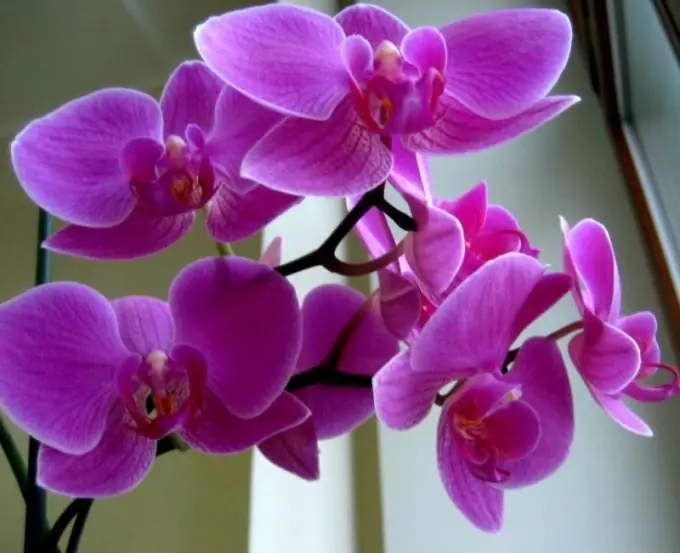Luxurious orchids can be successfully grown at home. These plants are not as capricious as it is commonly believed. Consider a few quirks of tropical beauties, and they will delight you with lush bloom for a long time.

Home orchids: what they are
At home, it is better to grow specially bred varieties of indoor orchids - for example, phalaenopsis, cymbidium, cellogyne or odontoglossum. These plants are decorative and small in size, as well as a short or completely absent dormancy period. Such plants do not need to be moved to darkened rooms, their soil should always be moist. Orchids without a dormant period can bloom all year round.
Soil, light and watering
The main requirement of orchids is constant soil moisture. Miniature species can be grown in terrariums, while taller potted plants should be placed on a tray of damp pebbles. It is advisable to keep plants away from steam radiators, heaters and air conditioners. Spray the air around the orchids regularly. If possible, place a household humidifier or air sink in the room with the plants. Use soft purified or settled water for watering.
Plants love bright, diffused light. They can be placed on the window, protected from direct sunlight and drafts. If the orchids are far from natural light, place lamps above them. The ideal light regime for plants is 10-15 hours of bright light daily. The flower standing on the window needs to be turned from time to time. Orchids do not like temperatures that are too cold or too hot. The ideal mode for them is 17-20 degrees. It is desirable that the temperature is the same day and night.
Orchids do not require frequent replanting and prefer tight containers. The roots protruding from the pot do not interfere with the normal development of plants at all. It is worth moving a flower to a new pot only when, due to tightness, it stops growing. When transplanting, it is better to use a special soil for orchids. In summer, plants need to be fed with liquid complex fertilizer.
Small features
Despite their capriciousness, orchids are resistant to pests. However, due to the high humidity, they can be susceptible to fungal diseases - this is indicated by soft spots on the leaves. If you notice them, immediately remove the affected areas, and isolate the plant itself.
Another enemy of orchids is gray rot. It appears if the plant is in too cool place. Place the flower in a warm place and spray the air around it regularly, being careful not to get on the leaves. Don't forget about the light mode. After a few days, the condition of the orchid should improve.






